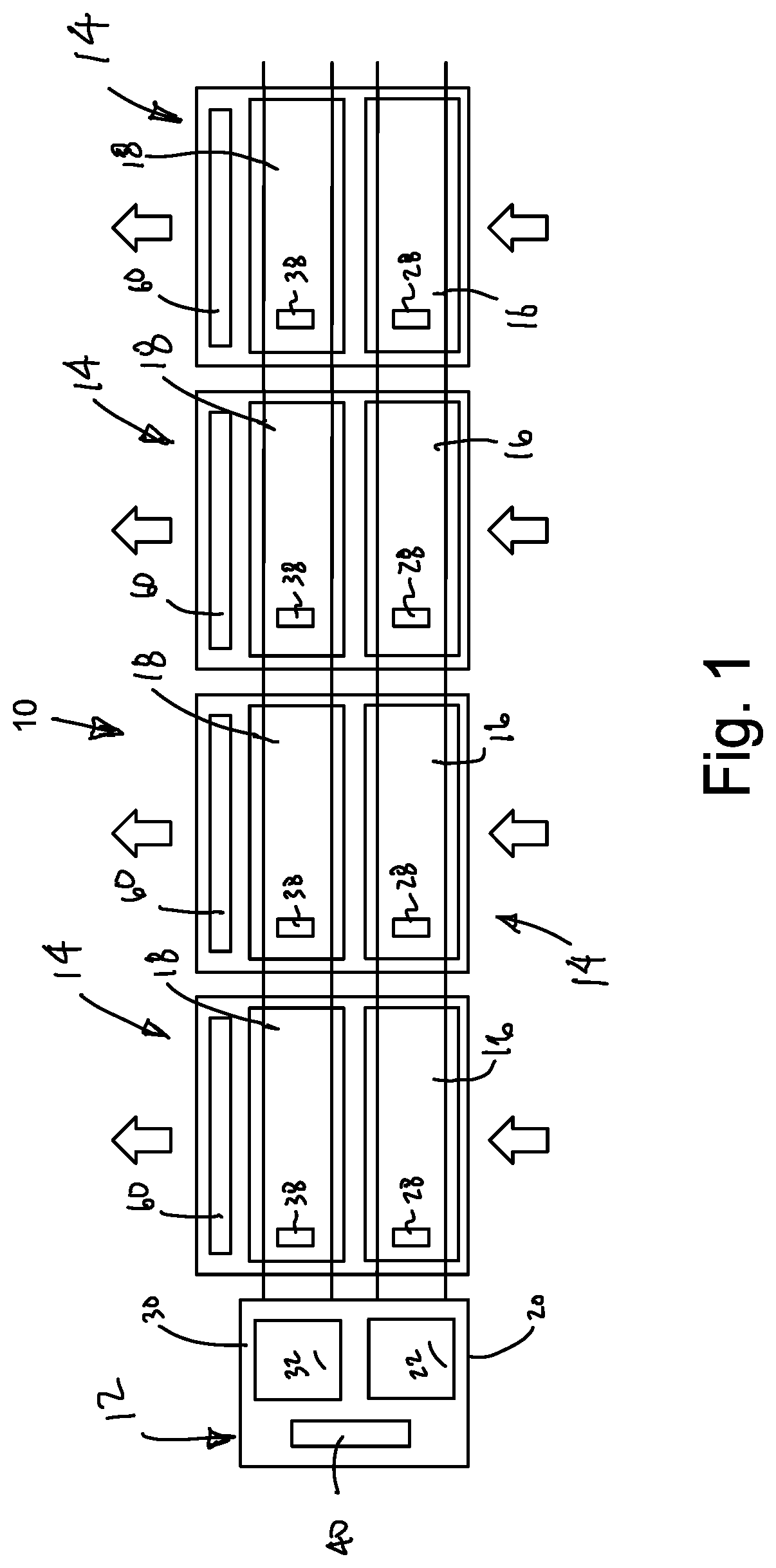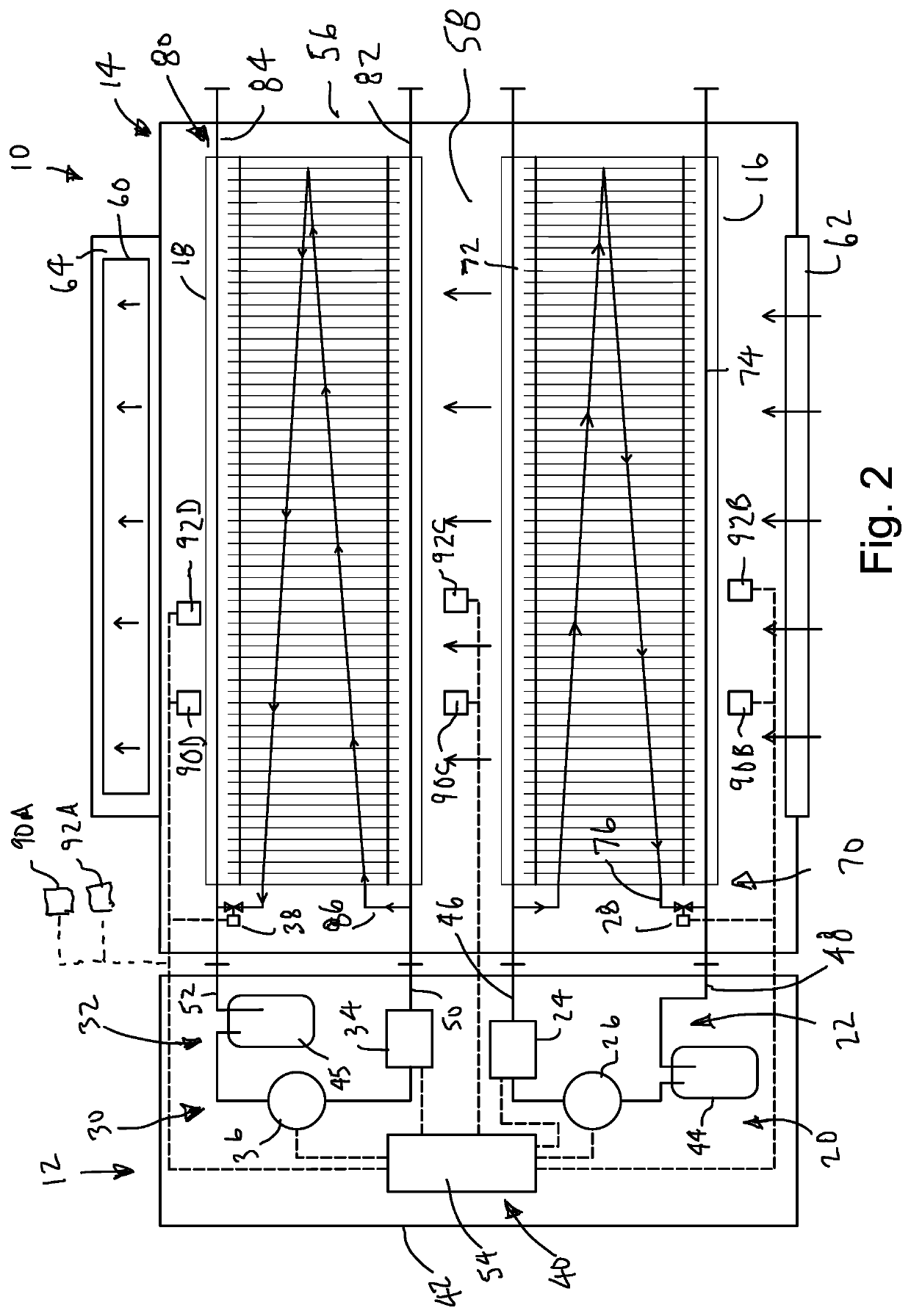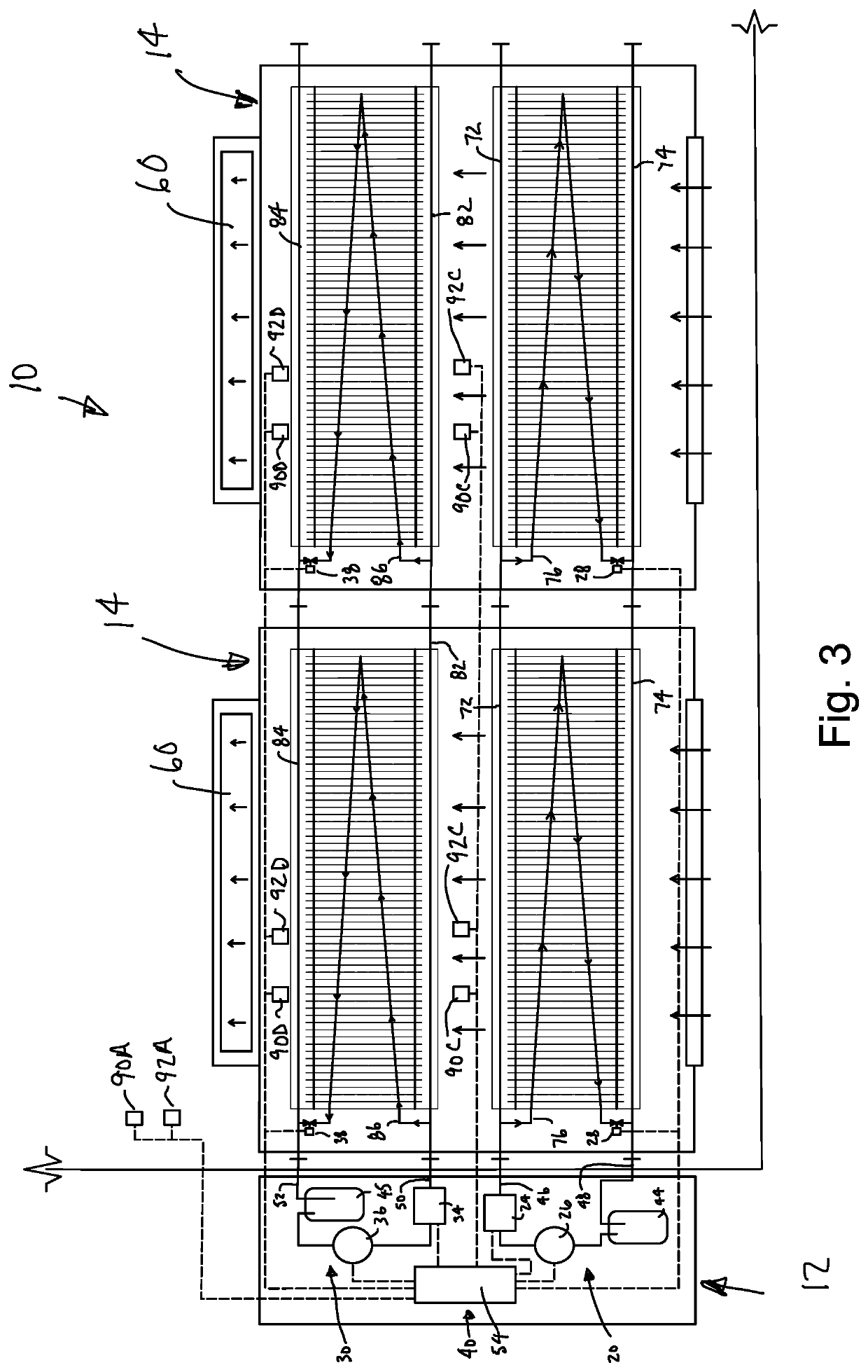Dehumidification system with variable capacity
a technology of dehumidification system and variable capacity, which is applied in the direction of lighting and heating apparatus, heating types, domestic applications, etc., can solve the problems of affecting the efficiency of the system, etc., and achieves the effect of high efficiency
- Summary
- Abstract
- Description
- Claims
- Application Information
AI Technical Summary
Benefits of technology
Problems solved by technology
Method used
Image
Examples
Embodiment Construction
[0026]A dehumidification system in accordance with one embodiment is illustrated in FIG. 1 and generally designated 10. The dehumidification system 10 is configured for use with an environmentally controlled room and includes a cooling refrigerant circuit 20 that circulates cooled refrigerant through one or more modular cooling coils and a heating refrigerant circuit 30 that circulates heated refrigerant through one or more modular heating coils. The cooling refrigerant circuit 20 may be used to cool the air within the room and / or to dehumidifying the air through condensation. The heating refrigerant circuit 30 may be used to heat the air, for example, to offset the heat loss associated with dehumidification and / or to heat air within the room.
[0027]In the illustrated embodiment, the dehumidification system 10 includes a head unit 12 and a plurality of modular dehumidifier units 14. The head unit 12 includes a cooling refrigerant subcircuit 22 with a chiller 24 to cool a supply of re...
PUM
 Login to View More
Login to View More Abstract
Description
Claims
Application Information
 Login to View More
Login to View More - R&D
- Intellectual Property
- Life Sciences
- Materials
- Tech Scout
- Unparalleled Data Quality
- Higher Quality Content
- 60% Fewer Hallucinations
Browse by: Latest US Patents, China's latest patents, Technical Efficacy Thesaurus, Application Domain, Technology Topic, Popular Technical Reports.
© 2025 PatSnap. All rights reserved.Legal|Privacy policy|Modern Slavery Act Transparency Statement|Sitemap|About US| Contact US: help@patsnap.com



